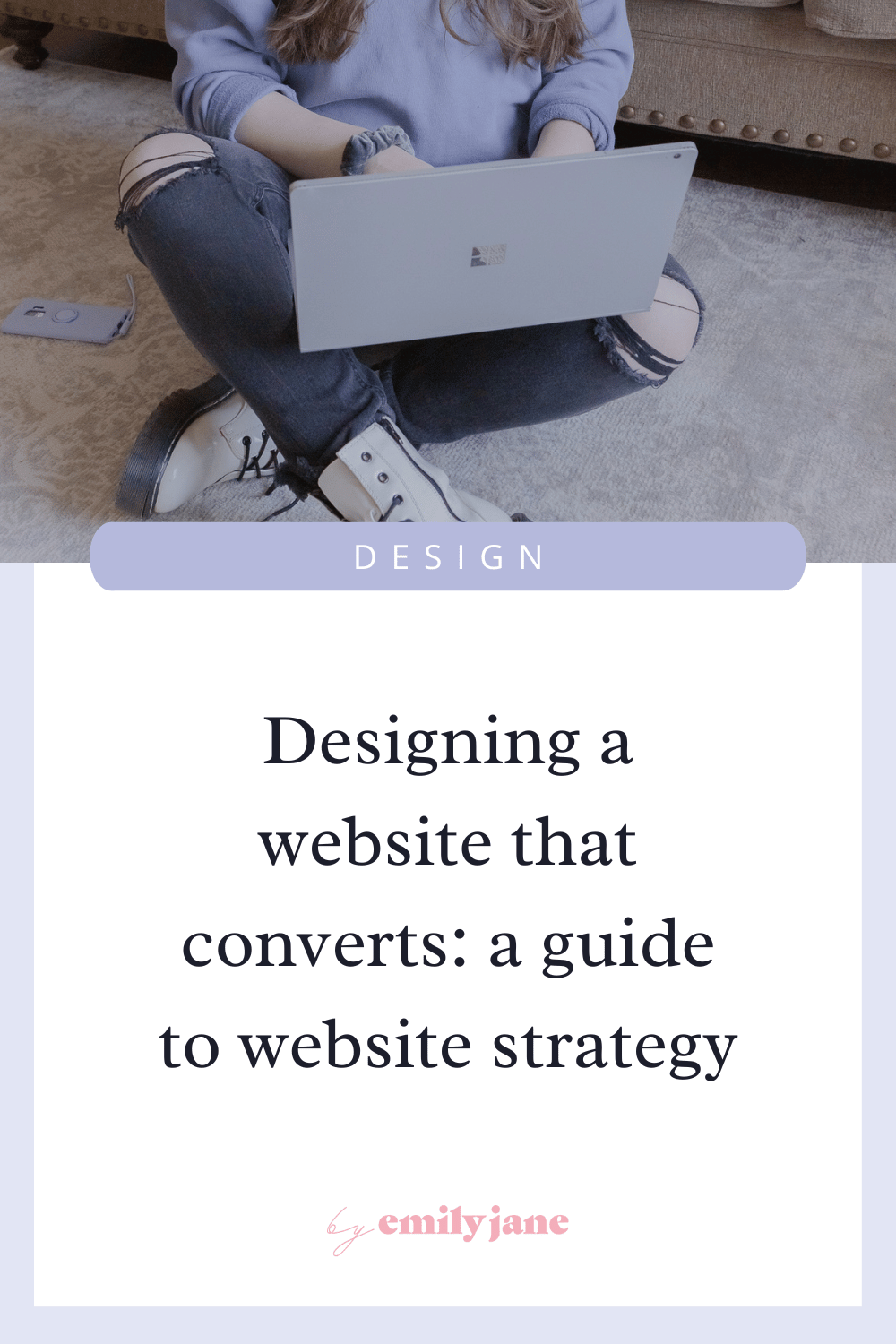Designing a wedding business website that converts: The importance of a website strategy
Why you need a website strategy before you redesign your wedding business website
Here’s the thing — if you’re serious about wanting to redesign your website in order to help your business grow, then there’s one thing you won’t want to design without: a website strategy.
To stand out in your saturated market & appeal to those high-end clients, you need a website design that communicates what makes you special, built around a strategic framework that gets you more leads.
I’m big on creating websites that showcase your strengths, instead of causing you to blend in. This needs to be woven into every piece of the website: from the images you choose, to the personality of the fonts & colors used, to the information you highlight, and the vibe behind all of the design decisions.
Why? Because the competition is fierce. It’s not enough to have a “nice” website anymore. (Sorry, my friend.)
Did you know the website design & build process takes around 20-80 hours even for a professional? Ssoo… if you have no experience, you can go ahead and double or triple that time. D:
If you’re going to invest all that time building something (or thousands of dollars to outsource it), you should make sure that your investment isn’t just going towards something that looks pretty. Amirite?
How to maximize wedding leads from your website
Having a beautiful website absolutely makes a MASSIVE difference in how people perceive your brand - there’s no doubt. According to Stanford University, 75% of people admit to judging a business’s credibility based on the website’s aesthetics.
But Econsultancy.com also found that 90% of people expect a good user experience when browsing a website.
These days, having a beautiful website design along with an intuitive layout is what clients require from your business if it’s going to be love at first sight.
That means you need to think about not just how to make it look good, but how to make it look good for the specific client you want to attract - and beyond that, how to get them to take action.
Pin the below venn diagram for later that shows some examples of the two sides of a successful website build!
The key essentials of a successful website strategy
Just like how brand strategy ideally should precede brand design, a website strategy should be established before jumping into a website design if you have big goals for the success of your website. Website strategy can be helpful for businesses at any stage, but especially if you’ve been in business for at least a few years and you’re ready for something more catered to your specific needs than a templated website.
Website strategy is something that some website designers, copywriters, or even brand designers offer; but be aware because not everyone does include it in their website build process.
The way I approach website strategy with my custom design clients is to thoroughly consider what exactly you’re trying to accomplish with your website, and then think through what exactly needs to go on the website in order to make that happen. We decide how we will get people to the website, and then what actions the website will help them take.
This includes but isn’t limited to defining what makes your business special vs. others in your niche, the target audience, what front-facing & hidden pages you need to have, the user flow & navigation setup, what info needs to go in each section, and what tech should be integrated.
From defining these goals as well as looking at what other competitors/peers are doing, it also helps us understand what we need to accomplish (or what the mood of the website needs to be through the aesthetics). This then makes it a lot easier to make decisions like choosing what photos to use, too.
Here’s roughly what it should cover:
Get more ROI from your website redesign project
Your website strategy will inform you about which areas of the website you should invest your resources in, whether that be your own time or money!
Here’s a cheat sheet for which piece you should focus on depending on the problem(s) you want to solve:
Not getting enough visitors from Google? → SEO & Blog
Not getting enough visitors from your other online accounts? → Social Media
Not turning enough visitors into inquiries? → Sales Copywriting or Email Marketing
Not turning enough inquiries into clients? → Brand Strategy/Positioning
Not booking enough high-paying jobs? → Design & Photography
Need to incorporate new pages, services, or tech? → Web Development
Once you know the focus of the website project, you can then ask yourself which parts of the website you’re willing to do yourself, and which you want to outsource. Keep in mind that you can utilize templates in some areas to help save money (like for websites, brand design, copy, or social media), but that they tend to be a more generic solution and still take a lot of time to customize & implement.
Don’t leave without checking out these other guides for wedding pros:
8 Reasons your wedding business website isn’t helping you book couples (+ Podcast episode)
20 Meaningful questions to set awesome business goals (for those who hate goal-setting)
Do this first when building a new Squarespace website (my #1 design tip)
What does web design cost in 2023 for service-based businesses?
How to move your website up in Google - An ultimate guide to SEO for wedding pros




